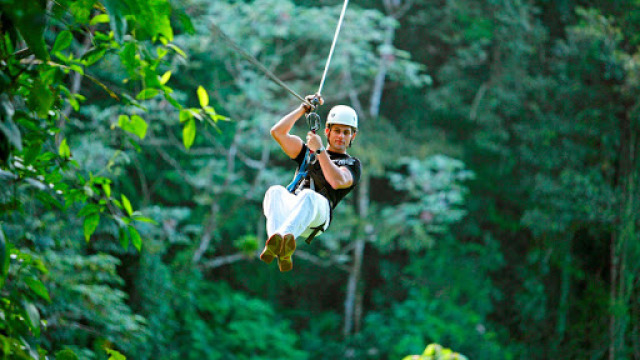A zip-line consists of a pulley suspended on a cable, usually made of stainless steel, mounted on a slope. It is designed to enable cargo or a person propelled by gravity to travel from the top to the bottom of the inclined cable by holding on to or being attached to the freely moving pulley. It has been described as essentially a Tyrolean traverse that engages gravity to assist its speed of movement. Its use is not confined to adventure sport, recreation, or tourism, but modern-day usage tends to favour these meanings.
A type of pulley with a grooved wheel known as a sheave is used in zip-lines, and the pulley turns as it travels along, thus reducing friction and enabling greater speed than would otherwise be possible.
The zip-line trolley is the frame or assembly together with the pulley inside that run along the cable. Zip-lines also have some kind of device to allow the cargo or rider take advantage of the pulley system. This could include a harness, seat, a cabin or often just a handhold in smaller playground applications, that attaches to the pulley by a pivoting link or carabiner which secures the load, allowing the person or cargo to travel down the line.
To be propelled by gravity, the cable needs to be on a fairly steep slope. Even then the rider or cargo will often not travel completely to the end (although this will depend on the load), and some means of safely stopping the car at the bottom end is usually needed with the larger zip-lines. Users of zip-lines must have means of stopping themselves.

